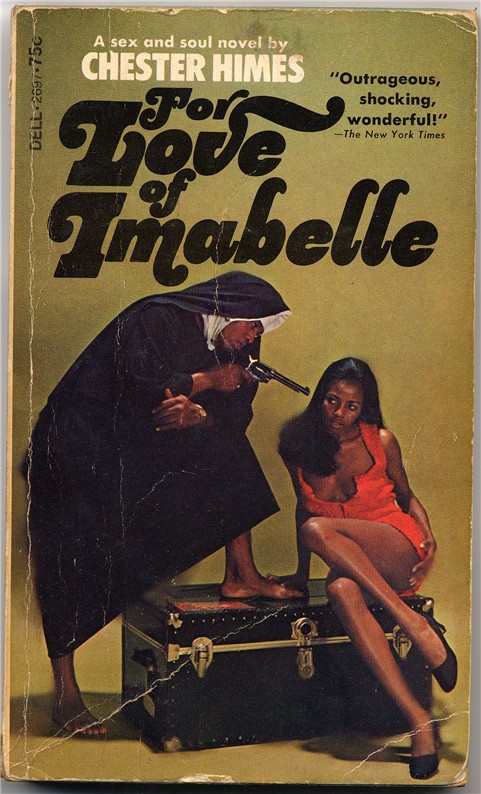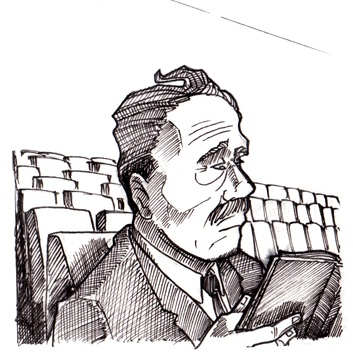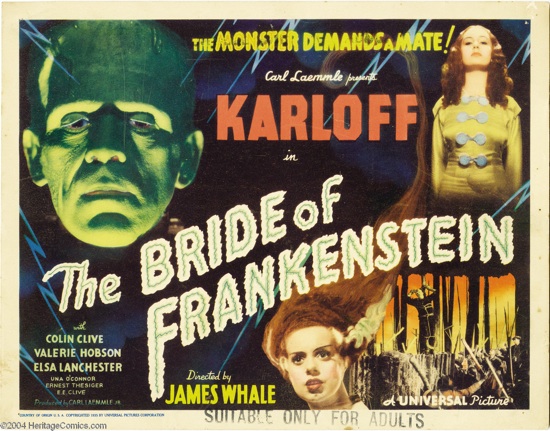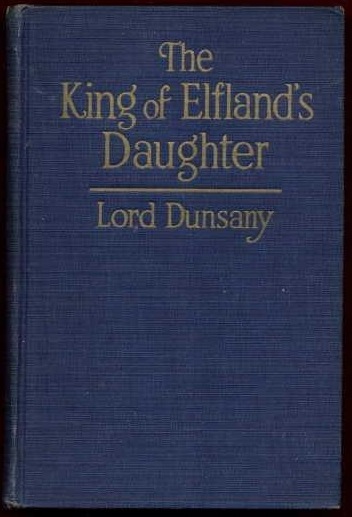Hilo Heroes, July 19-25
By:
July 19, 2009
HAPPY BIRTHDAY, this week, to the following high-, low-, no-, and hilobrow heroes. Click here for more HiLo Hero birthdays.
JULY 19

If CHESTER HIMES (1909-84) hadn’t found himself broke in France in the mid-1950s he might today be remembered only as the author of some acute, painful treatments of racism and prison life — the kind of books that are shelved under O for “obligatory” and seldom if ever read for pleasure. But an encounter with Marcel Duhamel, who founded the pioneering Série Noire line of rough-edged crime novels, led him to toss off nine riotous, breakneck pulp masterpieces. In these books, mostly featuring the black police detectives Coffin Ed Johnson and Grave Digger Jones, the law equals white rule, and therefore every single person — including the detectives — stands on the wrong side. While A Rage in Harlem (1957), The Real Cool Killers (1959), and the difficult, exhilarating Blind Man With a Pistol (1969), among others, make many of the same points as his earlier social realist exercises, the pain and despair are inextricably entwined with the laughs and thrills. There isn’t another crime writer who so effectively used the genre to turn vinegar into wine. — Luc Sante
JULY 20

In the Orwellian year of 1984, my father took me to the Centre Pompidou and exposed my 10-year-old sponge of a brain to its first contemporary art collection and, therein, to a towering agglomeration of television sets, each showing different and apparently disconnected sequences of the concrete and the abstract. I stumbled away baffled, befuddled and overstimulated, and with a hazy, unsettling montage of objects, colors and sounds seeping through my noggin. That day, NAM JUNE PAIK (1932-2006) lodged himself firmly in my consciousness. I wish I’d been at the multicolored, inside-out gasworks on New Year’s Day of the same year, when Paik — inventor of video art, gadget junkie, minimalist musician, and prescient commentator on the ubiquity of the cathode ray tube — realized “Good Morning, Mr. Orwell,” his shambolic compendium-cum-cabaret-act that linked Paris and New York via satellite and spliced his visionary videography with contributions from, amongst others, John Cage, the Thompson Twins, and Allen Ginsberg. But I’m happy with second best. — Patrick Cates
JULY 21
 In his seminal works, The Mechanical Bride (1951) and Understanding Media (1964), the Canadian philosopher MARSHALL MCLUHAN (1911-80) offered astute, didactic examinations of how the public receives and processes media, and what advertising tells us about society. Currently the darling of every Film Theory 101 class, there was a time when McLuhan — whose seminars and books were laced with puns, typographical displays, and a rapid-fire delivery at odds with staid academia — was considered at best a dilettante and at worst a crackpot. The fact that he died just as our current media era (when each blogger has her own set of followers, comic books have been elevated to neo-absurdist cinema, and Twitter has transformed each random neural firing into a public announcement) was beginning is too bad. What would McLuhan think? — written and drawn by Joe Alterio
In his seminal works, The Mechanical Bride (1951) and Understanding Media (1964), the Canadian philosopher MARSHALL MCLUHAN (1911-80) offered astute, didactic examinations of how the public receives and processes media, and what advertising tells us about society. Currently the darling of every Film Theory 101 class, there was a time when McLuhan — whose seminars and books were laced with puns, typographical displays, and a rapid-fire delivery at odds with staid academia — was considered at best a dilettante and at worst a crackpot. The fact that he died just as our current media era (when each blogger has her own set of followers, comic books have been elevated to neo-absurdist cinema, and Twitter has transformed each random neural firing into a public announcement) was beginning is too bad. What would McLuhan think? — written and drawn by Joe AlterioJULY 22

JAMES WHALE (1889-1957) was born in England’s industrial Black Country. Here’s a typical gag from those parts:
An old left-wing activist is on his death bed. He announces that he’s joined the Conservative Party. His comrades are shocked: “Why’s yow doon eet? Yow beyn a Labour man aw yer loyfe!” He responds, “Ar, bood bedder one of thoyse booggers go thayne woon of oos.”
Whale, who was openly gay, brought the Black Country’s morbid brand of camp to 1930s Hollywood, where he is best remembered for directing Frankenstein and The Bride of Frankenstein, horror movies that provide simple allegories of gleeful or guilty men committing “crimes against nature” in the secret of the night. But camp humor is originally an English discourse — TBOF’s posh’n’poofy Doctor Pretorius, the Fearsome Giant, and the “Whoopsie-Daisy” Old Crone are familiar Pantomime characters. So instead of allowing a Queer Studies reading of Whale’s movies to overwhelm us, we should instead regard him as one of the engineers of a new, globalized mode of camp in which gender, death, morality, class, and sexual orientation became matters of playful distance. But even as the victorious Pretorius giggles, drinks, and smokes in a crypt lit by skull-candles, we get a sobering sense of what it is to pursue desire to its logical ends — and it always ends up with your laboratory exploding. — Greg Rowland
JULY 23

John Mortimer, the barrister who successfully defended Last Exit To Brooklyn, a novel by HUBERT SELBY JR. (1928-2004), against an obscenity charge in a ’60s British courtroom, would do the same ten years later for the Sex Pistols’ Never Mind The Bollocks. In the first instance, he carried the day with his ingenious “aversion argument,” which proposed that Last Exit was “intentionally disgusting, shocking and outrageous,” that “it made the reader share in the horror it described and thereby so disgusted and outraged him that he would do what he could to eradicate those evils”; in the second, he somehow convinced the court that “bollocks” was a harmless medievalism. Had Johnny Lydon/Rotten read Selby? A later generation of punks were all over this gentle chronicler of human degradation: Henry Rollins, turned onto Selby’s work by Lydia Lunch, sought the older man out and formed an extraordinary friendship with him. As a writer Selby’s secret weapon was pity, that currently despised and un-Rollinsy word. Georgette, the transvestite addict in his story “The Queen Is Dead,” has something to do with Van Morrison’s Madame George: both flit desperately between love-dreams and a heartbreaking daylight, between two realms that are simultaneously visible only to the tear-rinsed eye of pity. — James Parker
JULY 24

Edward John Moreton Drax Plunkett, the 18th lord of the Irish barony of Dunsany, hunted big game in Africa and played champion chess. As LORD DUNSANY (1878-1957), he also wrote, without revising, a prodigious number of short stories, essays, novels, and successful plays that no one performs any more. He is justly enshrined for his marvelous and influential fantasy tales, which mutate from the lofty and limpid high myths of his early “Pagana” stories to the chummy clubhouse adventure tales of his later decades. His necessary work lies in the zone in between: the dozens of tales, mostly published in the teens, that ironically reframe, with an urbane tone at once loving and tart, the profound Faerie glamour of his first inspirations. Tales like the glorious “Idle Days on the Yann” and the hilarious “Chu-bu and Sheemish” propel us far beyond the fields we know. But they also remind us, with a forgiving smile and a frankness far removed from the stately world creation of Tolkien, why it is, and why it might be good, that we never actually escape. — Erik Davis
JULY 25

In 1927, ELIAS CANETTI (1905-94) threw himself into a Viennese crowd protesting an acquittal in a murder trial. The crowd went on to burn down the Palace of Justice, and Canetti’s feeling of selflessness and exhilaration vexed him for decades: “Fifty-three years have passed, and the agitation of that day is still in my bones… I became a part of the crowd, I fully dissolved in it….” During the following decade he wrote two plays and a nearly great novel, Auto-da-fé, before fleeing Austria for England. He spent the next twenty or so years working on Crowds and Power, in which he attempted to make sense of these sensations — the loss of self; and the feeling of the subjectivity of this collective being, the crowd — that he’d experienced. Crowds and Power is far too long, with too many rash generalizations, but while Gustave LeBon and others wrote with disdain about mobs from outside (as potential victims of crowd violence), only Canetti tried to describe the phenomenology of the crowd from inside. It is these moments in his flawed book that will endure, and still have not been matched. — Tor Aarestad
